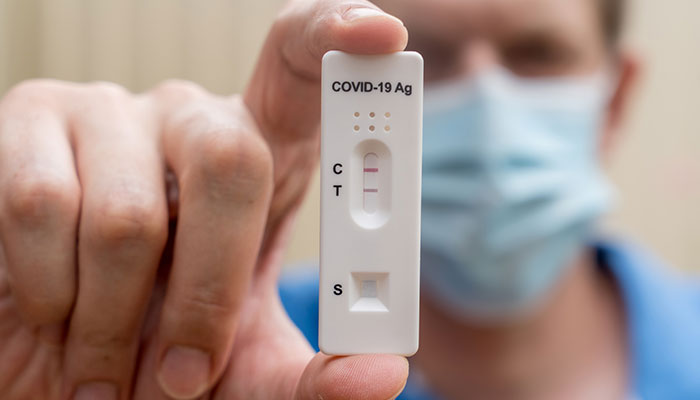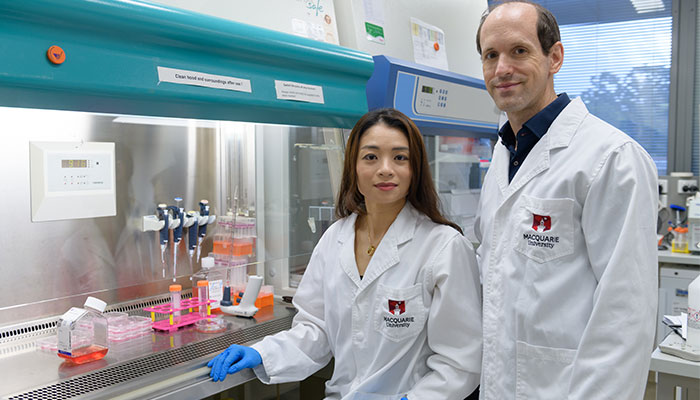Many viruses, including the SARS-CoV-2 virus that causes COVID-19, can infect the brain and cause brain cells to fuse together and either malfunction or stop working completely, new research has shown.

Answers: the new research results may explain why some COVID patients experience brain fog, headaches, loss of taste and smell and other long-term neurological symptoms, says Macquarie Professor Lars Ittner.
These fused brain cells can hide the virus from the immune system, which may explain why the SARS-CoV-2 virus can be found in the brains of long COVID patients months after they were first infected.
The research showed that some viruses could trigger fusion in cells in both mouse and human brain tissue, which could explain chronic neurological symptoms such as headache, ‘brain fog’ and exhaustion, that some patients experience long after initial infections.
The study, published in the journal Science Advances on June 7, was a collaboration between scientists at Macquarie University, the Queensland Brain Institute (QBI), University of Queensland and the University of Helsinki.
“While some viral brain infections can be deadly, and others cause inflammation, this study has found yet another outcome, where the host brain cells are fused, possibly causing brain dysfunction,” says Professor Lars Ittner, Director of the Dementia Research Centre at Macquarie University.
The research also showed that the SARS-CoV-2 spike S protein embeds itself in fused brain cells, which may help viruses to evade the immune system.
Neurological symptoms from viral brain infections can include headache, fever, confusion, epileptic seizures, and loss of taste or smell, and in very severe cases, viral brain infections can cause encephalitis, meningitis, paralysis or death.
Breakthrough brain technology
The research relied heavily on 'mini-brains', developed by Professor Ittner in collaboration with Macquarie University molecular biologist Associate Professor Yazi Ke, which allows researchers to experiment on complex human neuronal networks resembling a live human brain.

Innovators: Molecular biologist Associate Professor Yazi Ke, pictured left, and Professor Lars Ittner, pictured right, developed 'mini-brains' that played an important role in the new COVID research collaboration explaining long-term neurological symptoms in some patients.
Some of these mini-brains were infected with viruses, or viral surface fusogens – including the SARS-Cov-2 virus – and then compared with non-infected control mini-brains, using a remarkable breakthrough in brain experiment techniques.
“We reprogram human stem cells into brain cells, including neurons, and allow them to assemble into mini-brains in a dish,” says Associate Professor Ke.
This study is just one example of the huge research potential now possible thanks to the development of the mini-brains, which bridge the gap between non-living tissue and human subjects.
“We can’t observe cell fusion from a virus using post-mortem tissue,” says Professor Ittner.
“We cannot definitely say – this cell part belongs to one neuron, this belongs to another neuron, without the help of the engineered marker proteins that we use throughout the study on live tissue,” he says.
Surface fusion
The research was initiated by senior lead author Professor Massimo Hilliard at the Queensland Brain Institute, who had tested surface molecules used by viruses to enter host cells, on cell cultures and on roundworms, and found these were causing host cells to fuse, says Professor Ittner.
Professor Hilliard contacted Professor Ittner and Associate Professor Ke to invite them to work on this research because of their experience developing robust brain experiments with mouse models.
“We realised this work would be an ideal application of the mini-brains, and worked with him to design a number of experiments to show how the viral-induced brain cell fusion occurs, and what the effects are on the nervous system,” Professor Ittner says.
Professor Ittner says that a number of mini-brains generated at Macquarie University were shipped to the Queensland Brain Institute to be infected with SARS-CoV-2 virus, the spike protein, and an orthoreovirus, and studied within QBI’s high-level bio-containment facilities.
- Earth's first flower was pollinated by insects: world-first research
- Please explain: What is a debt ceiling?
Other research collaborators included Associate Professor Giuseppe Balistreri from the University of Helsinki and Associate Professor Kirsty Short and Professor Frederic Meunier from The University of Queensland, Professor Ittner says.
He says this study will also make an important contribution to our understanding of the long term impact of COVID-19 infections, in particular where long COVID symptoms are present.
“This very comprehensive study can help us understand some of the mechanisms of this viral behaviour,” says Professor Ittner.
“We have also started a research program in our lab around understanding the impact of COVID infections on the brain and how this impacts the progression, outcome and even the onset of dementia.
“Through this new Macquarie University research program, the first compounds we have designed in our lab, from scratch, to treat COVID are now under development."
Professor Lars Ittner is Director, Dementia Research Centre, Macquarie University.
Associate Professor Yazi Ke is a molecular biologist in the Dementia Research Centre, Macquarie University.



